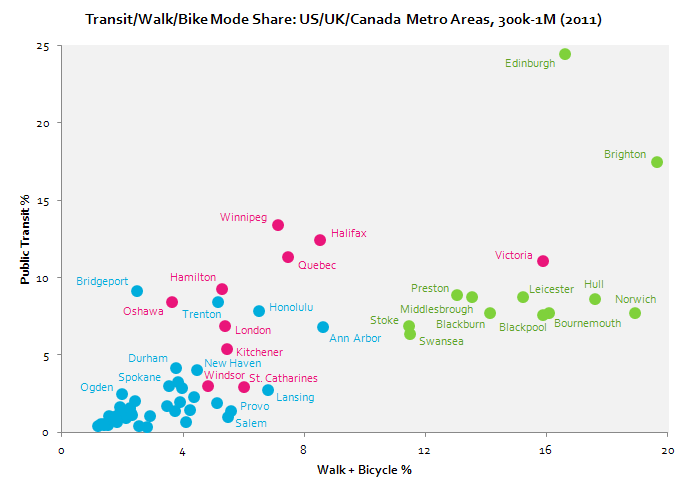The problem with lack of mass transit isn't about constrained residential growth on the outskirts, but rather how it constrains growth in the core, especially commercial development, due to the extra space required for parking lots and garages.
And it's not like Raleigh-Durham-Chapel Hill is devoid of transit in the first place. Local transit in the Raleigh metropolitan area got around 5.4 million boardings in 2019, twice that of similar-sized Oklahoma City. The Durham and Chapel Hill local transit systems got around 6.6 million and 6.3 million boardings respectively. The regional system for Raleigh, Durham, Chapel Hill got 1.9 million boardings, 0.6 million Raleigh and 1.3 million Durham-Chapel Hill.
With 14.2 million transit boardings annually for population of 600,000 and a commuter mode share of 4.2 percent, the Durham-Chapel Hill metropolitan area is not only the transit leader in North Carolina, far ahead of Charlotte, it is also one of the leaders in all of the USA, ahead of Dallas, Atlanta, Phoenix, Miami, Salt Lake City, San Diego, Cleveland, and many more.
You can see on this graph how Durham-Chapel Hill urban area compares to other similar-sized urban areas in US, Canada, and UK in terms of non-car travel:

You can on this graph the correlation between high transit use vs. high rates of walking and cycling. Durham-Chapel Hill is not only one of the leaders of transit in the US, it also one of the leaders in terms of walkability. Again, getting people onto transit is not about enabling growth, but enabling intensification to reduce travel distances and therefore the city more walkable.